Cracked heels can be painful and unsightly, affecting both your comfort and confidence. Fortunately, many effective home remedies can help remove cracked heels and give you the beautiful, soft feet you desire. In this comprehensive guide, we explore 10 natural DIY solutions—using common household ingredients—that have been trending in beauty and wellness circles. Whether you’re searching for “DIY foot care tips,” “natural remedies for cracked heels,” or “home treatments for soft feet,” this article is packed with expert advice and practical steps to transform your foot care routine.
Listerine and Vinegar: A Refreshing Cleanse for Cracked Heels
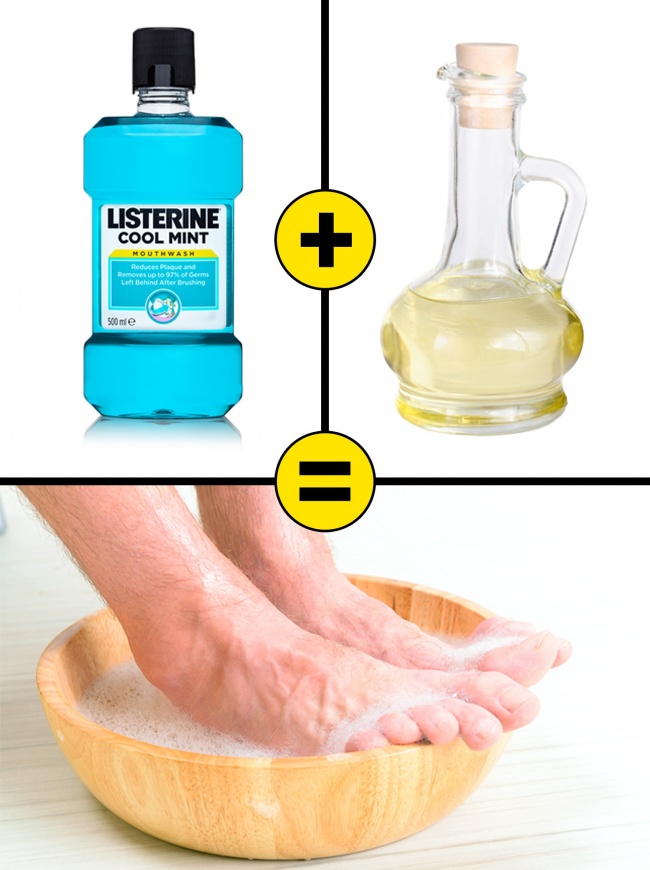
Listerine and vinegar may sound like an unusual combination for foot care, but many swear by its ability to soften and cleanse rough, cracked heels. This remedy utilizes the antiseptic properties of Listerine and the natural exfoliating action of vinegar.
How It Works:
- Antibacterial Action: Listerine helps eliminate bacteria that can worsen skin conditions.
- Exfoliation: Vinegar gently exfoliates dead skin cells, making it easier for moisture to penetrate and heal cracks.
How to Use:
- Mix equal parts Listerine and white vinegar in a shallow basin.
- Soak your feet for 15–20 minutes.
- Gently scrub your heels with a soft brush or pumice stone.
- Rinse with lukewarm water and apply a moisturizer.
This remedy not only cleanses your feet but also prepares them for deeper hydration. For more insights into natural exfoliation and foot care, visit Healthline.
Rice Flour, Honey, and Vinegar: A Natural Exfoliating and Moisturizing Mask

Combining rice flour, honey, and vinegar creates a potent mask that exfoliates and moisturizes simultaneously. Each ingredient plays a crucial role in treating cracked heels.
Key Benefits:
- Rice Flour: Acts as a natural exfoliant to remove dead skin.
- Honey: Provides deep moisturization and has antibacterial properties.
- Vinegar: Balances pH and further helps in removing dead skin cells.
How to Apply:
- Mix 2 tablespoons of rice flour with 1 tablespoon of honey and 1 teaspoon of vinegar until you get a smooth paste.
- Apply the mixture to your cracked heels and let it sit for 15–20 minutes.
- Gently massage your feet to boost circulation.
- Rinse off with warm water and follow up with a rich foot cream.
This DIY treatment is ideal for those seeking a natural, multi-tasking remedy to enhance foot texture and appearance. For further reading on natural exfoliating agents, check out articles on WebMD.
Banana: The Fruit-Powered Foot Softener
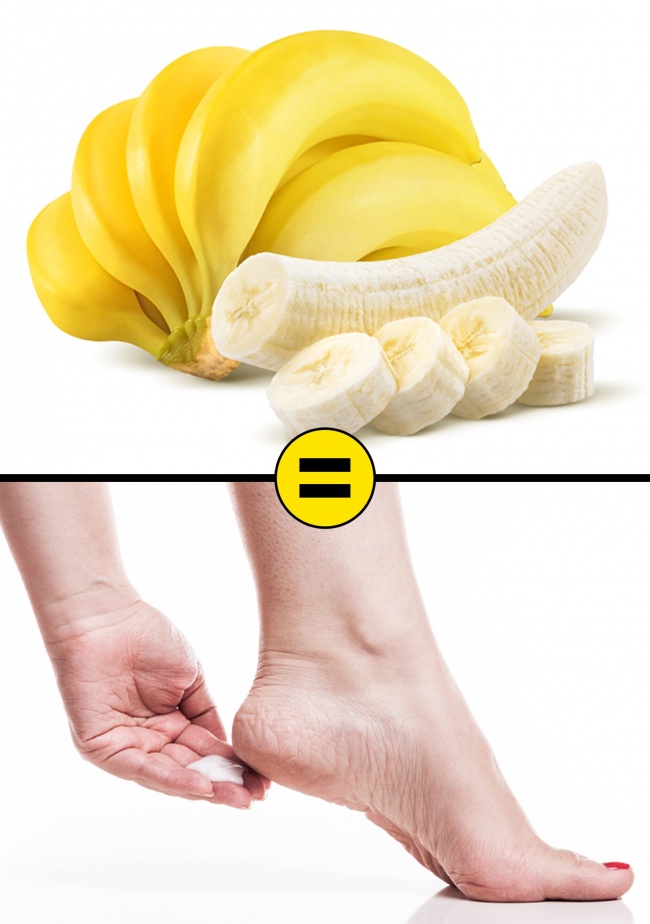
Bananas are not only a healthy snack but also a fantastic natural remedy for cracked heels. Rich in vitamins and minerals, bananas help nourish and hydrate the skin.
Benefits of Banana for Foot Care:
- Moisturizing: High potassium content helps hydrate dry skin.
- Nourishing: Vitamins A, B, and E promote skin repair and regeneration.
- Soothing: The natural enzymes in bananas help soften rough patches.
How to Use:
- Mash a ripe banana into a smooth paste.
- Apply it generously over your cracked heels.
- Leave it on for 20–30 minutes.
- Rinse off with lukewarm water and pat your feet dry.
- Apply a moisturizer for added hydration.
Using bananas as a foot mask can be a fun, natural way to improve skin texture and reduce cracks. For more on the benefits of fruits in skincare, explore Medical News Today.
Honey: A Natural Humectant for Deep Moisturization
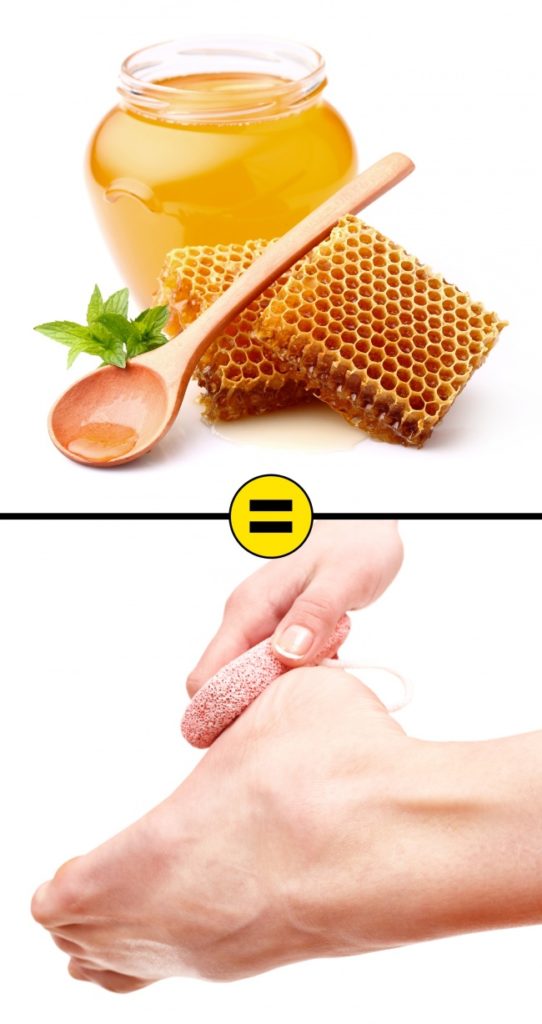
Honey is renowned for its ability to lock in moisture, making it an excellent ingredient for treating dry, cracked heels. Its antibacterial and anti-inflammatory properties also promote healing.
Why Honey Works:
- Hydration: Acts as a humectant to draw moisture into the skin.
- Healing: Accelerates the healing process and reduces inflammation.
- Antibacterial: Helps prevent infections in cracked areas.
Application Method:
- Apply a thick layer of raw honey directly onto your heels.
- Cover your feet with cotton socks to enhance absorption.
- Leave it overnight for maximum benefit.
- In the morning, gently wash your feet with warm water.
Honey’s soothing properties make it a staple in many natural skin care routines. For additional information on the benefits of honey for skin, visit Mayo Clinic.
Vegetable Oil: Locking in Moisture for Long-Lasting Softness
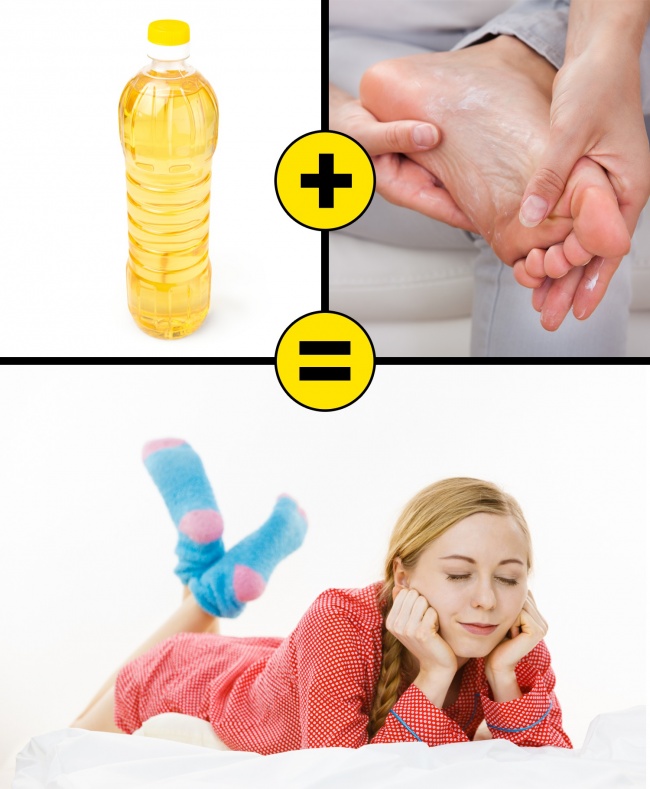
Vegetable oil, such as olive or coconut oil, is a time-tested remedy for dry skin. It penetrates deeply to moisturize and repair cracked heels.
How Vegetable Oils Benefit Your Feet:
- Deep Moisturization: Oils help lock in moisture and prevent further dryness.
- Nutrient-Rich: Contains antioxidants and vitamins that promote skin repair.
- Natural Barrier: Forms a protective layer on the skin to prevent moisture loss.
How to Use:
- Warm a small amount of your chosen vegetable oil.
- Massage it into your heels, focusing on cracked areas.
- For enhanced results, cover your feet with socks and leave the oil overnight.
- Repeat daily for best results.
Using vegetable oil is a simple, effective method to maintain soft, healthy feet. Discover more natural moisturizers by exploring Healthline.
Vicks VapoRub: An Unconventional Remedy with Caution
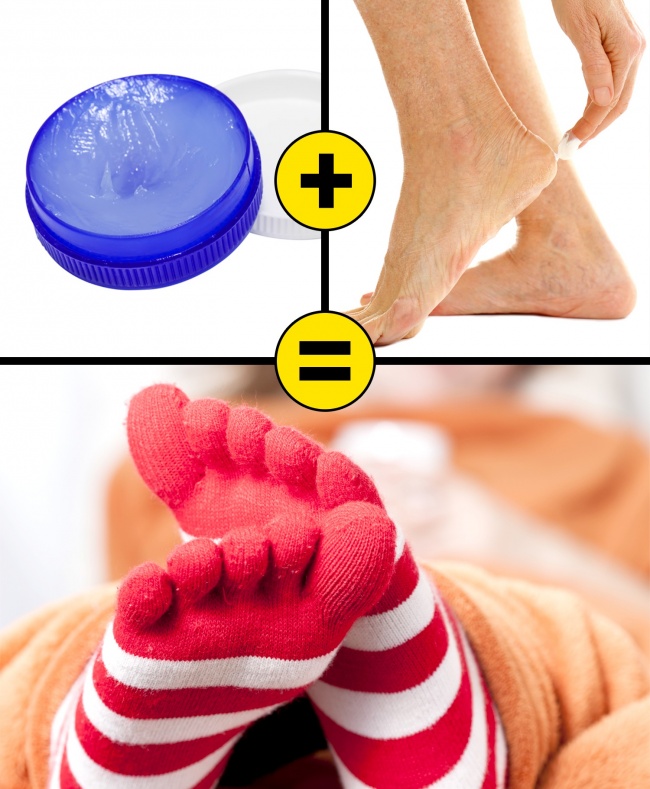
Vicks VapoRub is a popular product for respiratory relief, but some claim it can also help with cracked heels. While it contains ingredients like menthol and eucalyptus that can increase circulation, caution is advised.
Benefits and Risks:
- Increased Blood Flow: Menthol can create a cooling effect that improves circulation.
- Temporary Relief: May provide a temporary softening effect on tough skin.
- Caution: Vicks is not specifically formulated for skin repair, and prolonged use may lead to irritation in some individuals.
Usage Instructions:
- Apply a thin layer of Vicks VapoRub on the affected area.
- Massage gently into the skin.
- Cover with a clean sock to prevent staining.
- Use sparingly and monitor your skin for any signs of irritation.
For safe use, it is advisable to consult with a dermatologist before making Vicks a regular part of your foot care routine. More insights can be found at WebMD.
Baking Soda: A Gentle Exfoliant and pH Balancer
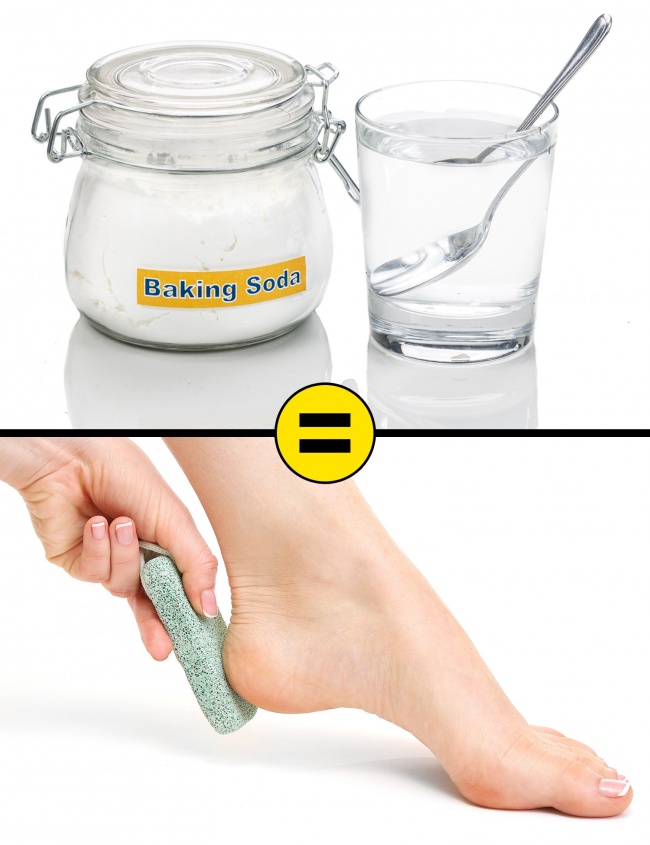
Baking soda is a versatile ingredient in natural remedies, known for its mild exfoliating properties and ability to balance skin pH. However, it must be used correctly to avoid irritation.
How Baking Soda Helps:
- Exfoliation: Helps remove dead skin cells, making way for new, healthy skin.
- pH Balance: Assists in maintaining the skin’s natural pH, which is crucial for healing.
- Soothing: Can reduce inflammation when used in the proper concentration.
How to Create a Baking Soda Scrub:
- Mix 1 tablespoon of baking soda with a few drops of water to form a paste.
- Gently massage the paste onto your heels in circular motions.
- Rinse thoroughly with warm water.
- Follow up with a moisturizing cream to lock in hydration.
For more information on safe exfoliation techniques, refer to resources like American Academy of Dermatology.
Aloe Vera Gel: Nature’s Soothing and Healing Remedy
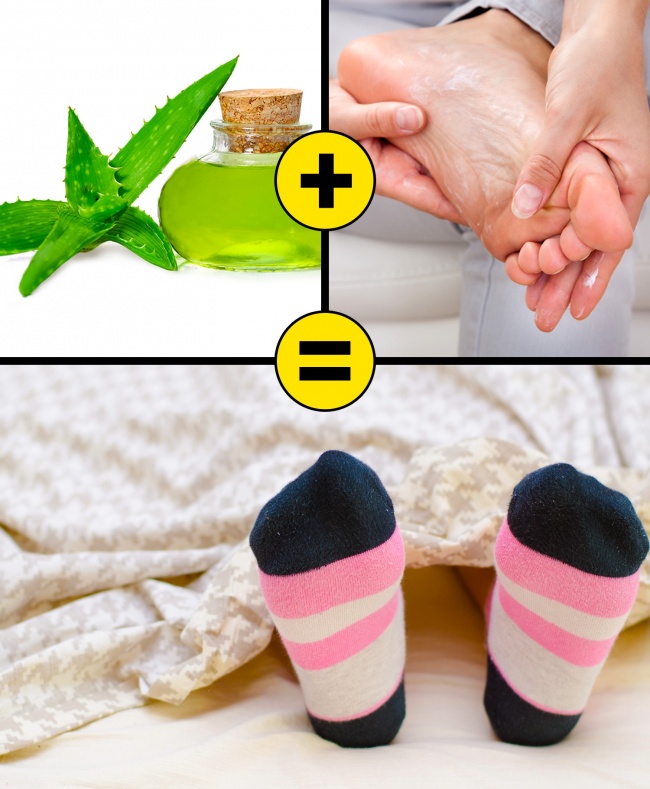
Aloe Vera gel is celebrated for its soothing, anti-inflammatory, and moisturizing properties, making it an ideal remedy for cracked heels.
Benefits of Aloe Vera:
- Soothing Relief: Provides immediate relief to irritated, cracked skin.
- Healing Properties: Promotes skin regeneration and reduces inflammation.
- Hydration: Deeply moisturizes and helps maintain skin elasticity.
Application Guidelines:
- Extract fresh aloe vera gel from the plant or use a pure, commercial product.
- Apply a generous layer directly to your cracked heels.
- Allow it to absorb for 20–30 minutes before rinsing off, or leave it on overnight.
- Use regularly for best results.
Aloe Vera is a trusted natural remedy with a long history in skin care. To learn more about its benefits, visit Healthline.
Vaseline and Lemon Juice: Combining Moisture and Exfoliation
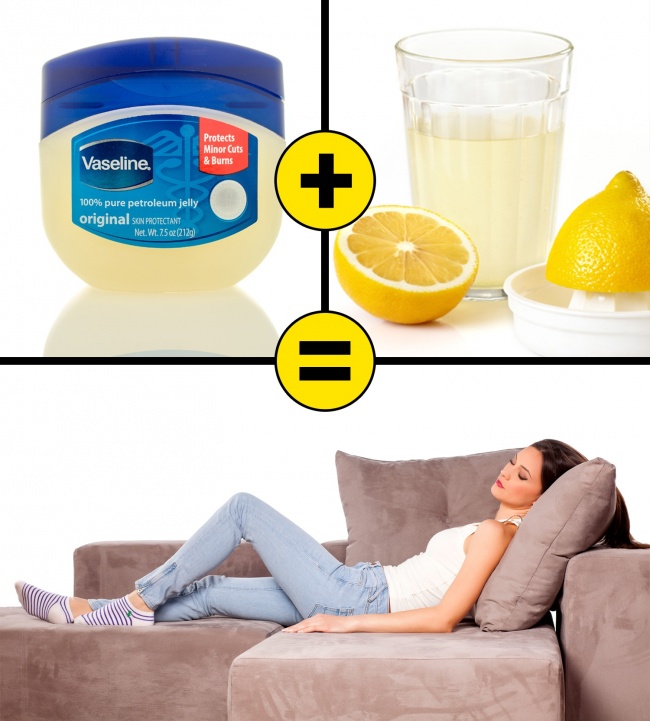
The combination of Vaseline (petroleum jelly) and lemon juice is a popular home remedy believed to both moisturize and exfoliate cracked heels.
How It Works:
- Vaseline: Creates a protective barrier that locks in moisture and aids in skin healing.
- Lemon Juice: Acts as a natural exfoliant due to its acidic properties, helping to lighten and remove dead skin.
Steps to Use:
- Mix a small amount of lemon juice with an equal amount of Vaseline.
- Apply the mixture on your heels, focusing on areas with severe cracks.
- Leave it on for 10–15 minutes before rinsing thoroughly.
- Follow up with a rich moisturizer if needed.
Important Note:
Lemon juice can be irritating for sensitive skin. It’s recommended to do a patch test before applying it to your entire foot. For professional advice, check Mayo Clinic.
Epsom Salt: A Soothing Soak for Relaxation and Healing
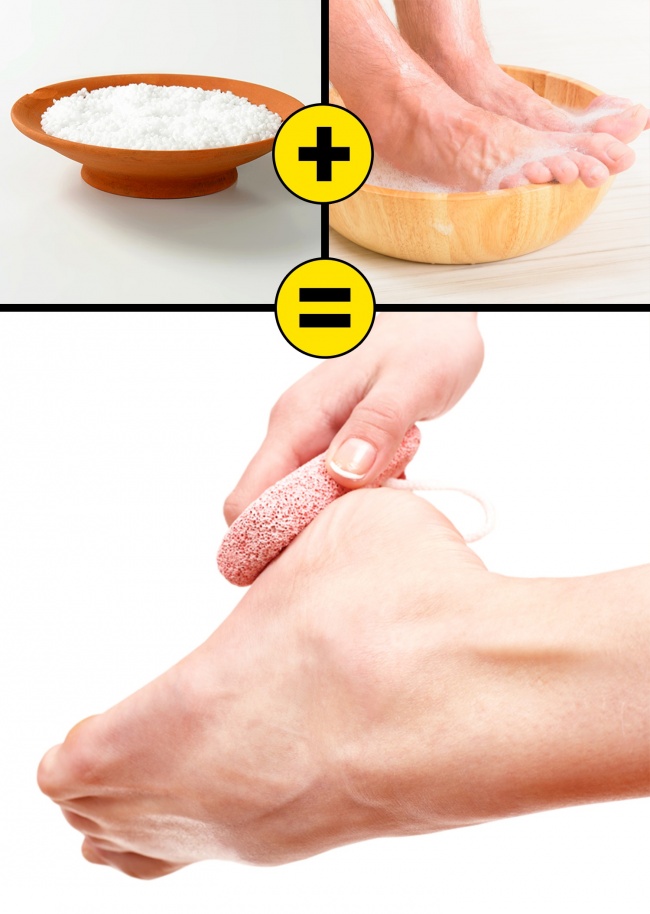
Epsom salt is widely known for its therapeutic properties, particularly in soothing muscle pain. Its benefits extend to foot care, where it can help soften rough skin and reduce inflammation.
Benefits of an Epsom Salt Foot Soak:
- Softens Skin: Helps to dissolve dead skin cells and soften hard, cracked heels.
- Reduces Inflammation: Magnesium in Epsom salt can reduce swelling and soothe sore tissues.
- Promotes Relaxation: A warm soak in an Epsom salt solution is not only therapeutic but also promotes overall relaxation.
How to Prepare:
- Dissolve 1/2 to 1 cup of Epsom salt in a basin of warm water.
- Soak your feet for 15–20 minutes.
- Pat dry gently and apply a moisturizer or foot cream to seal in hydration.
- Repeat regularly for best results.
For additional tips on foot care and the benefits of Epsom salt, visit WebMD.
Final Thoughts: Embrace Safe and Effective Foot Care
Cracked heels can be a persistent and painful issue, but with the right home remedies and care, you can transform your feet into soft, smooth canvases. While these 10 natural treatments offer promising results, it’s important to remember that consistency and proper application are key to success. Always patch-test new remedies to avoid adverse reactions, and consult with a healthcare provider if your condition worsens or does not improve.
Key Takeaways:
- Use natural ingredients like Listerine, vinegar, and aloe vera to gently exfoliate and hydrate your feet.
- Maintain a consistent foot care routine by incorporating these remedies into your weekly schedule.
- Prioritize safe practices by following expert advice and reputable sources such as Mayo Clinic, Healthline, and WebMD.
Adopting these home remedies can lead to beautiful, healthy feet while saving you time and money. Embrace these DIY solutions, and say goodbye to cracked heels—one step at a time.
For more natural beauty tips and DIY health advice, be sure to check out our other articles on skincare and wellness. Whether you’re a beauty enthusiast or simply looking for practical home care solutions, the path to healthier feet is just a few natural remedies away.
Preview photo credit depositphotos




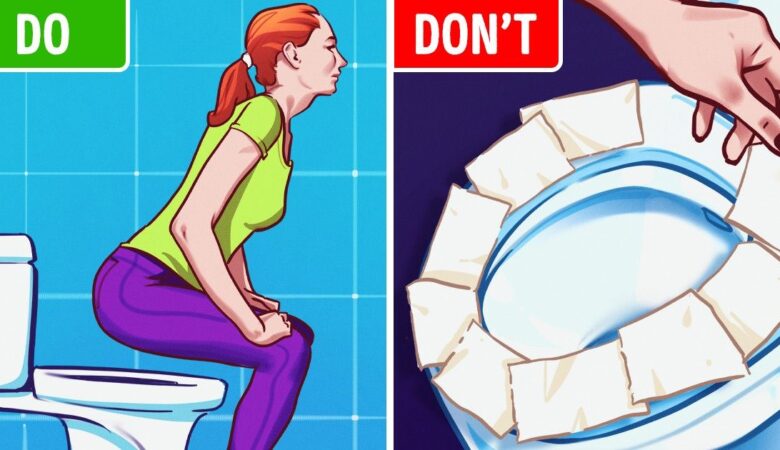



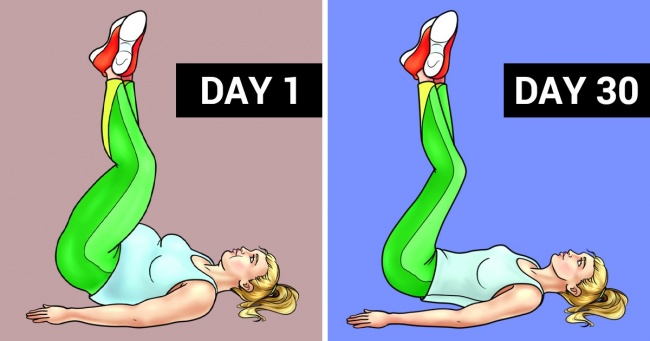
Leave a Reply